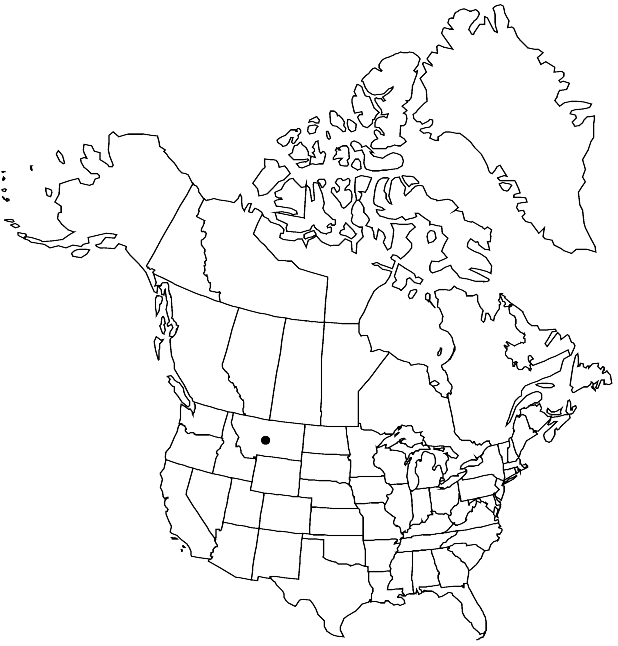Difference between revisions of "Physaria humilis"
Novon 12: 324. 2002.
FNA>Volume Importer |
imported>Volume Importer |
||
| Line 54: | Line 54: | ||
|publication year=2002 | |publication year=2002 | ||
|special status= | |special status= | ||
| − | |source xml=https:// | + | |source xml=https://bibilujan@bitbucket.org/aafc-mbb/fna-data-curation.git/src/bb6b7e3a7de7d3b7888a1ad48c7fd8f5c722d8d6/coarse_grained_fna_xml/V7/V7_1074.xml |
|tribe=Brassicaceae tribe Physarieae | |tribe=Brassicaceae tribe Physarieae | ||
|genus=Physaria | |genus=Physaria | ||
Revision as of 23:51, 27 May 2020
Perennials; caudex simple, (thickened with persistent leaf bases); densely (silvery) pubescent, trichomes 5- or 6-rayed, rays furcate or 3-branched. Stems simple or few to several from base, prostrate, (from below a terminal rosette of leaves, unbranched), 0.2–0.5 dm. Basal leaves: blade elliptic to broadly ovate or obovate, (1–)1.5–2.5(–3) cm, margins entire, (apex obtuse). Cauline leaves: blade spatulate, 3–7 mm, (base cuneate), margins entire. Racemes not loose, (scarcely elongated in fruit, 3–5-flowered). Fruiting pedicels (straight or slightly curved). Flowers: sepals (yellow-green), narrowly elliptic to narrowly long-triangular, 3.7–5 mm; petals oblanceolate to nearly obovate, 7–8.5 mm, (abruptly tapering to narrow claw). Fruits wider than long, apex truncate to shallowly notched, compressed (angustiseptate), 3–4 mm; valves densely pubescent, trichomes ascending to erect, sparsely pubescent inside; ovules 4 per ovary; style 2–3 mm. Seeds plump, (slightly compressed).
Phenology: Flowering Jun-early Aug.
Habitat: Steep slopes, dry summits, rocky fellfields, dry ledges
Elevation: 2700-2900 m
Discussion
Of conservation concern.
Physaria humilis is found in metamorphosed rock and detritus on the peaks of the Bitterroot Mountains.
Selected References
None.
